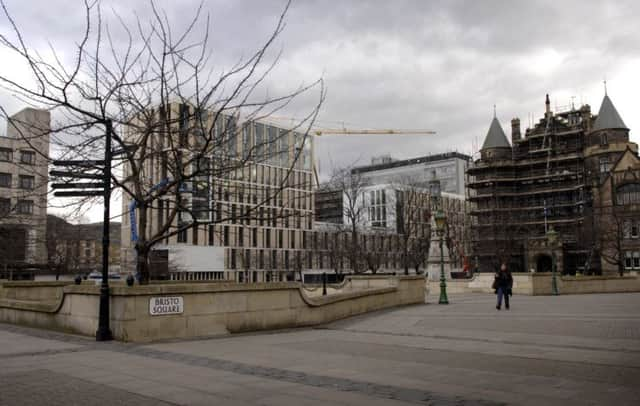Scotland’s top universities fail to widen access


Figures released yesterday by the Scottish Funding Council show 9.7 per cent of Scottish entrants came from the poorest postcodes in 2012-13, up from
9.1 per cent the previous year.
But despite a concerted effort by the Scottish Government, “ancient” universities including Aberdeen and Edinburgh took a smaller percentage of students from the poorest 20 per cent or poorest 40 per cent of areas, as defined by the Scottish Index of Multiple Deprivation (SIMD).
Advertisement
Hide AdAdvertisement
Hide AdScottish universities are under pressure to widen access after signing a series of outcome agreements which make future funding dependent on measures to increase participation.
According to SFC figures, 9.7 per cent of Scots entrants under 21 came from “SIMD 20” areas, while 23.2 per cent were from “SIMD 40” postcodes, up from 22.5 per cent the previous year.
But while many of the country’s newer universities
increased participation, figures for some of Scotland’s elite institutions stayed static, or even fell.
Edinburgh recruited a smaller proportion of students from both groups in 2012-13, while Aberdeen took the same percentage of those from SIMD 20 homes and fewer from SIMD 40 homes. Both Glasgow and St
Andrews managed to increase their proportion of students from both groups, however.
St Andrews’ image as an elite institution was emphasised when privately educated Kate Middleton, the future Duchess of Cambridge, met Prince William there.
The SFC said that while entrants from the most deprived areas remained over-represented in Scotland’s colleges, they were under-represented in universities. Entrants from deprived areas represent 22.8 per cent of those in colleges, but only 8.2 per cent in ancient universities.
Gordon Maloney, president of the National Union of Students in Scotland, said: “While any increase in the numbers of students from deprived communities should be welcomed, the reality is that these figures show little progress on previous years. We know universities can’t do it all on fair access but they can, and must, do more than this. Scotland remains the worst on access in the whole UK.”
Advertisement
Hide AdAdvertisement
Hide AdSeparate figures from the Higher Education Statistics Agency yesterday showed that while 87 per cent of students in Scotland went to state school, the figure for universities including Edinburgh (67 per cent) and St Andrews (58.9 per cent) is much lower.
Alastair Sim, director of Universities Scotland, said: “Every university is deeply committed to widening access to all students with the potential to benefit from higher education.
“[These] figures are real proof of that, as close to half of the increase in last year’s undergraduate intake are students from the 40 per cent most deprived areas of Scotland. That is an additional 290 students from deprived neighbourhoods.
“It’s important to remember that this increase comes a year before additional access places created by the Scottish Government come into effect. We can expect to see a step change in next year’s data.”
Yesterday’s figures also showed that since 2003-4, the number and percentage of students from outside the UK has continued to grow. EU entrants have almost doubled and those from outwith the EU have
increased by 66 per cent.
Learning minister Alasdair Allan said: “The government is committed to education being based on the ability to learn, not the ability to pay, and enshrined the principle in statute.
STUDENTS BACK LECTURER WALKOUTS
STUDENTS have backed their lecturers in an ongoing dispute over pay which has already led to a series of walkouts.
The National Union of Students pledged its support to the University and College Union (UCU) Scotland, which is meeting for its annual conference in Stirling today.
Advertisement
Hide AdAdvertisement
Hide AdAcademics across the UK have held a series of strikes in protest at a 1 per cent pay deal. University staff say their pay has fallen by 13 per cent in real terms since 2009.
UCU Scotland president Dave Anderson said: “The last thing staff want to do is take action which affects their students, but cuts are having a negative effect on staff and higher education as a whole. Students want a fair resolution to this dispute and UCU is working hard to make this happen.”
Gordon Maloney, president of NUS Scotland, added: “It’s important to remember that staff haven’t gone on strike in pursuit of grace and favour houses, lavish expenses or six-figure salaries – the perks enjoyed by university principals – but in response to a measly offer of 1 per cent. And that’s in a year where we’ve seen Scottish university principals enjoying bonuses and pay increases as high as 24 per cent.”